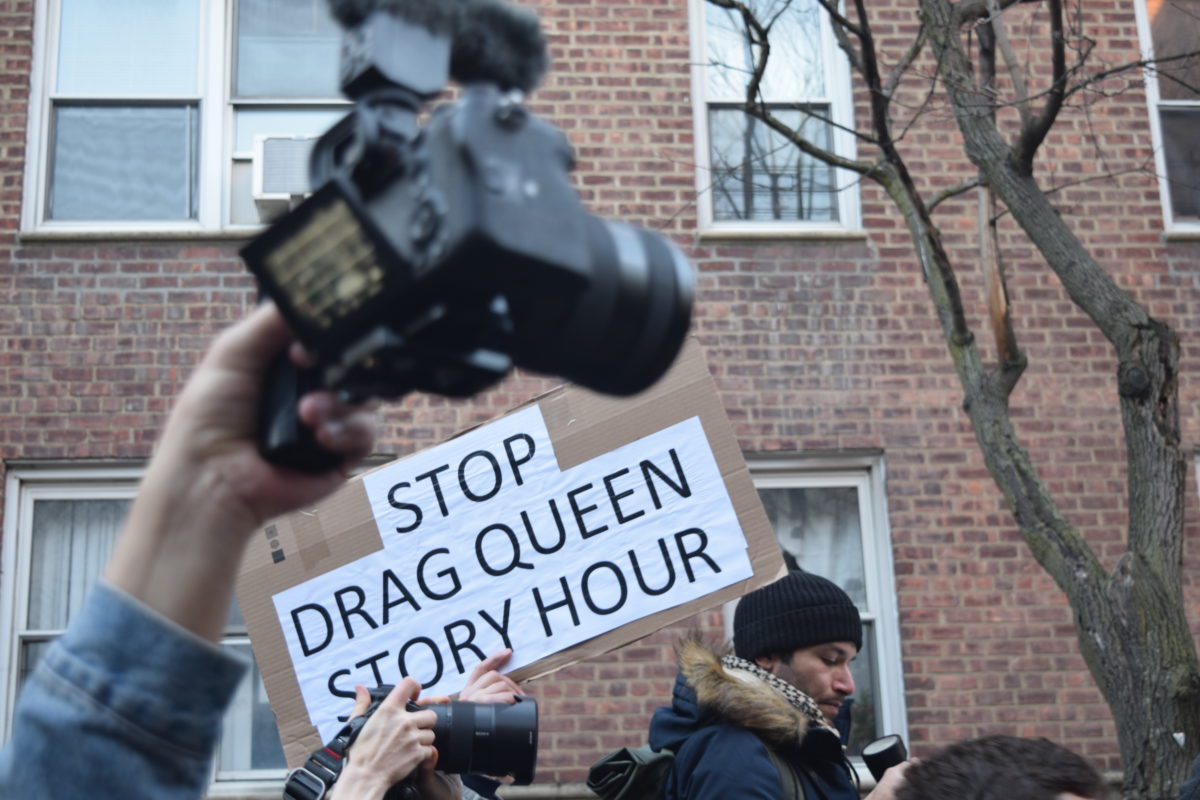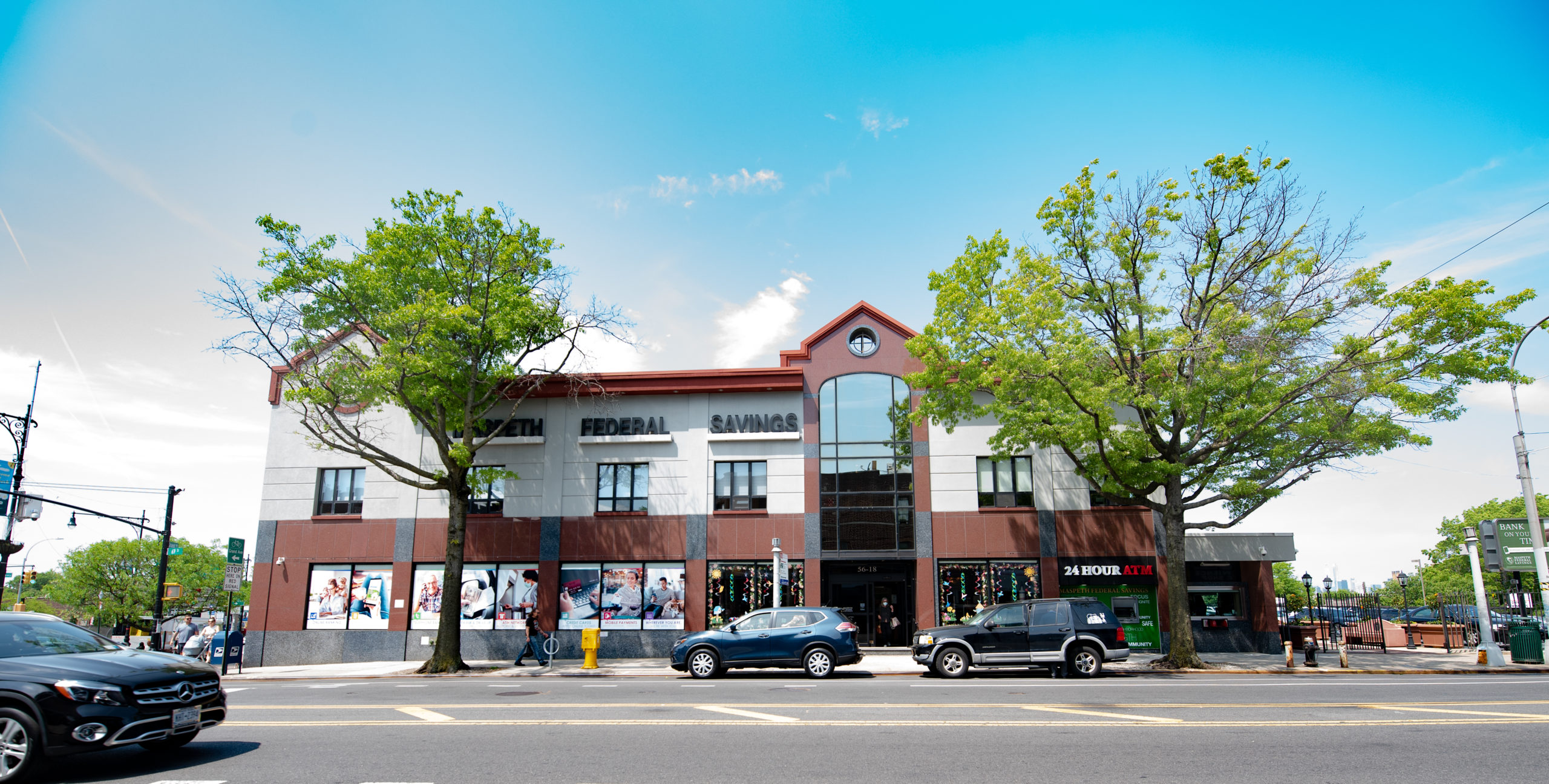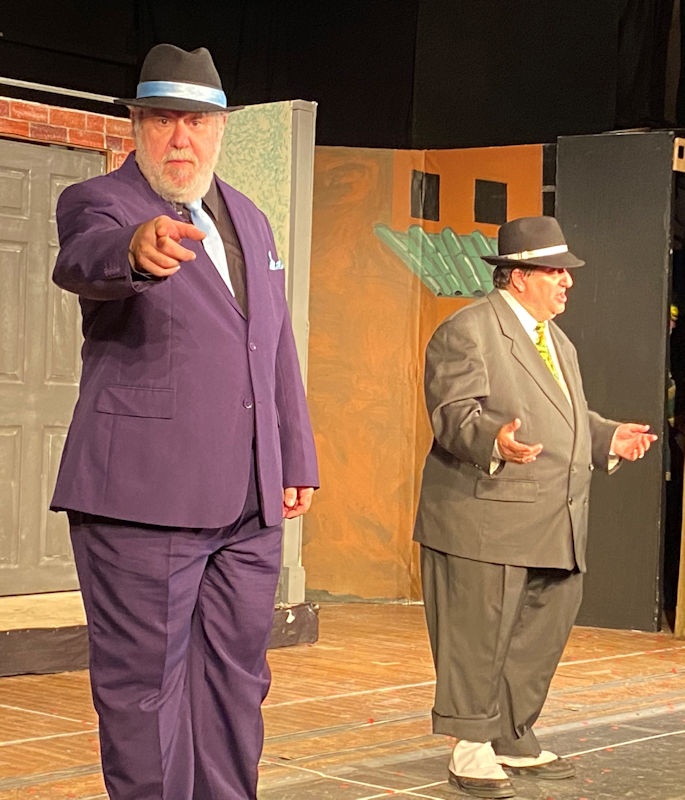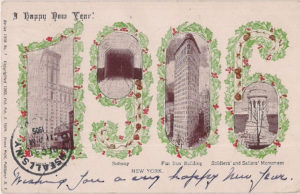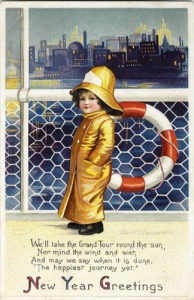Friends, foes of Drag Story Hour show up in Jackson Heights
Proud Boys make appearance outside children’s event
By Jessica Meditz
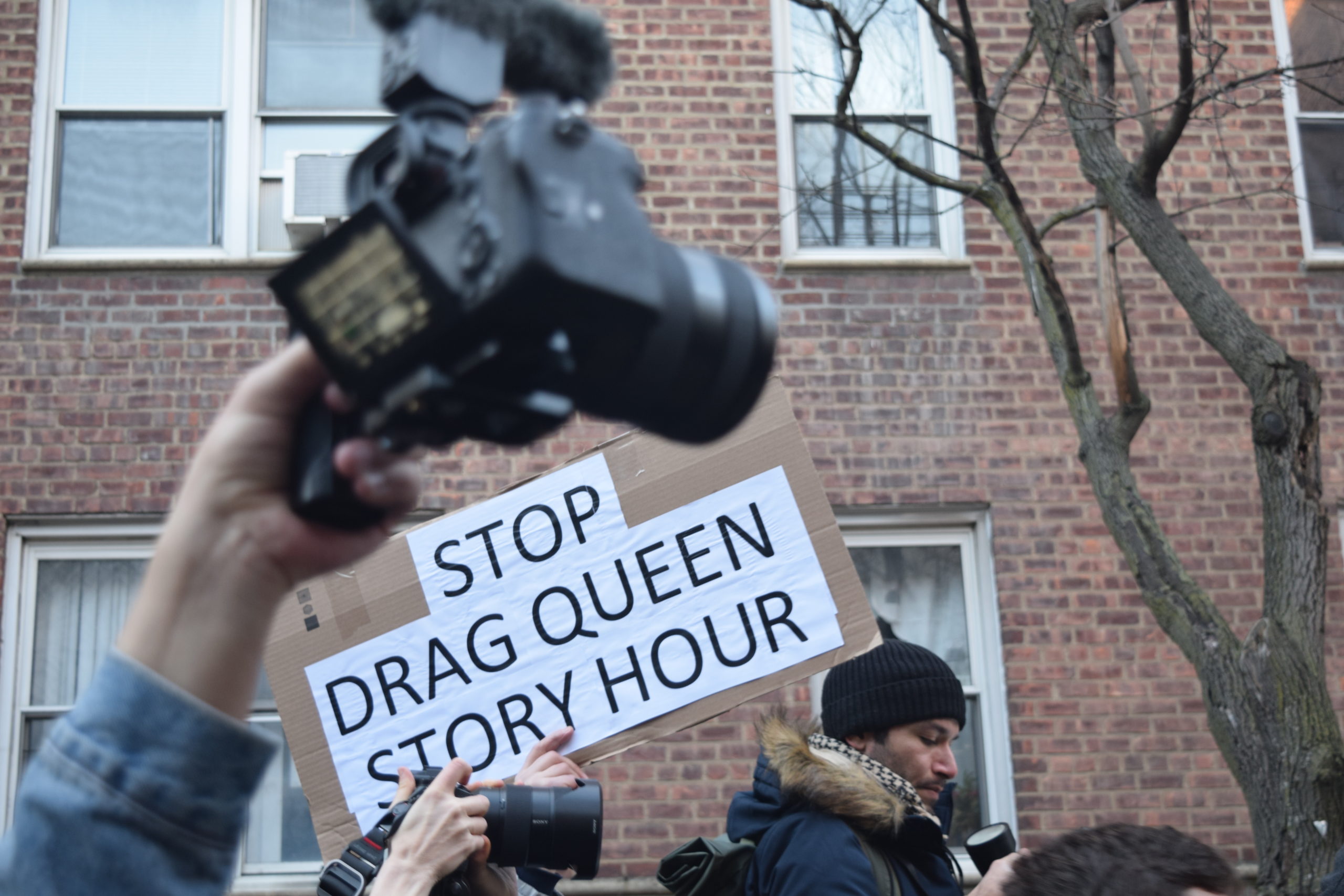
Protesters of Drag Story Hour were outnumbered by supporters, about 30 people compared to 200.
In response to a group of people openly against Drag Story Hour and their shared plans to disrupt the children’s event once more, supporters of the initiative showed up to defend it last Thursday, Dec. 29.
Both sides of 81st Street – the site of the Queens Public Library in Jackson Heights – were filled with passionate crowds up and down the block.
One could spot on the left side of the street individuals holding signs that read “Stop Drag Queen Story Hour” and “Groom dogs, not kids,” some donning Proud Boys gear. The right side of the street featured a sea of rainbows along with signs that said “Drag the bigotry away” and “Libraries are for everyone.”
Protesters of Drag Story Hour were outnumbered by supporters – approximately 30 compared to 200 people – as library goers looked over the interaction from a bird’s eye view through the building’s top floor windows.

Back in November, Jackson Heights elected officials held a community rally outside the same library, denouncing hate and expressing their full support of Drag Story Hour – which was also met with backlash from counter protesters.
“There are many parents, myself included, who are choosing to raise their children in Jackson Heights because we want our children immersed in diversity,” State Senator Jessica Ramos said in a statement. “I’ll welcome the joy that Drag Story Hour offers over the bigotry of a loud, select few any day.”
While the Drag Story Hour event took place, LGBTQ+ supporters used their own bodies as shields to prevent the children and parents from being seen by the other side of the street. A performer read “‘Twas the Night Before Pride” outside the library’s doors as children listened and engaged.

Assemblywoman Catalina Cruz poses with a young supporter of Drag Story Hour.
In response to the reaction from counter protesters and anti-LGBTQ+ sentiments seen throughout the city, such as Manhattan Councilman Erik Bottcher’s home and district office being vandalized after openly supporting Drag Story Hour, Bottcher, Council Speaker Adrienne Adams, Councilman Shekar Krishnan and Councilwoman Crystal Hudson released a joint statement condemning homophobic and transphobic actions.
They argue that Drag Story Hour, founded as a nonprofit in 2015, engages children in arts and crafts, as well as imaginative storytelling – while simultaneously teaching acceptance.
“It is particularly disturbing that these anti-LGBTQIA+ protesters have focused their harassment in Jackson Heights and Chelsea, two neighborhoods with historical importance as safe communities and centers of organizing for the LGBTQIA+ movement in New York City,” they said in the statement.
“The harmful, homophobic, and transphobic extremism targeting Drag Story Hour events and the New Yorkers who support them, including Council members, is vile and dangerous. We will not stay silent or accept these shameful attempts to intimidate and spread hate, especially after recent incidents that have devolved into violence and put New Yorkers in harm’s way,” it continued. “This City Council is proud to support children’s programs that promote inclusivity, literacy and joy.”
People on both sides of the issue clashed at last week’s protest, and some interactions did get physical.
Several NYPD officers were at the scene.
One individual was arrested that day, a 32-year-old Forest Hills resident named John Curry.
Police say Curry was charged with resisting arrest, disorderly conduct and obstructing governmental administration. It is unclear if he is against or in favor of Drag Story Hour.
After the event began to fizzle out, NYPD officers escorted a group of people in Proud Boys gear to the Jackson Heights-Roosevelt Avenue subway station, where they were permitted to ride for free, a video posted by TikTok creator, @brennalip, revealed.
The videographer questioned, “Proud Boys don’t have to pay for the fare?”
One of the individuals responded, “We’re special, thank you. Appreciate it, from your taxes.”
Before the clip ended, an NYPD officer appeared to motion the videographer and other individuals to back up and pay for the fare themselves, which the creator questioned.
“Is that the situation you’re saying?” they asked, to which the officer replied, “That is correct.”

TikTok creator @brennalip posted a video revealing the NYPD permitting a group of people donning Proud Boys gear not to pay the MTA fare.
Many social media users expressed their angry reactions to the situation, some even calling on Mayor Eric Adams to respond.
State Senator Jessica Ramos shared an update to Twitter on Jan. 2.
“Just spoke to the precinct. They said they had to escort the Proud Boys [because they] were picking fights [with] people on the street like vendors as well as reporters,” Ramos wrote in the tweet.
“Still, this wouldn’t look so hypocritical if [the] NYPD would stop arresting people of color over a $2.75 fare.”

